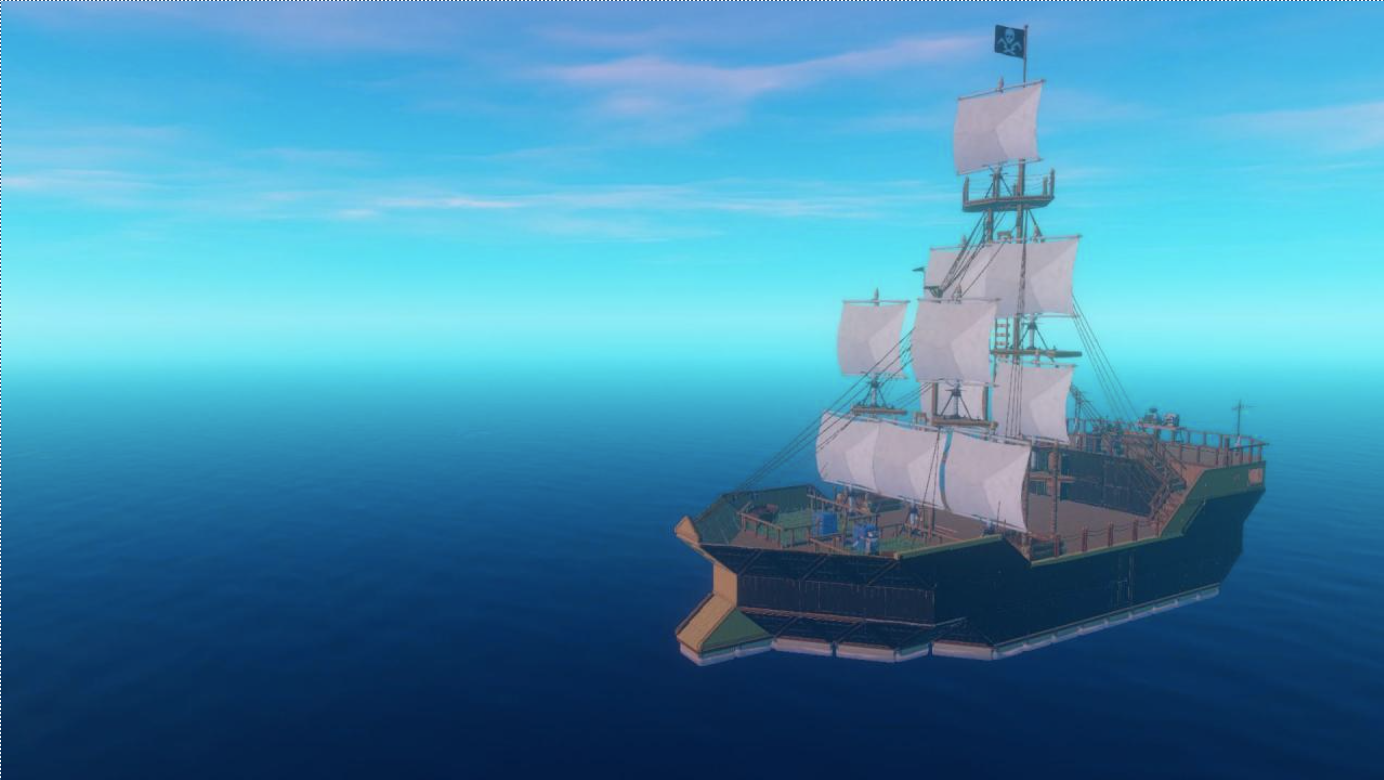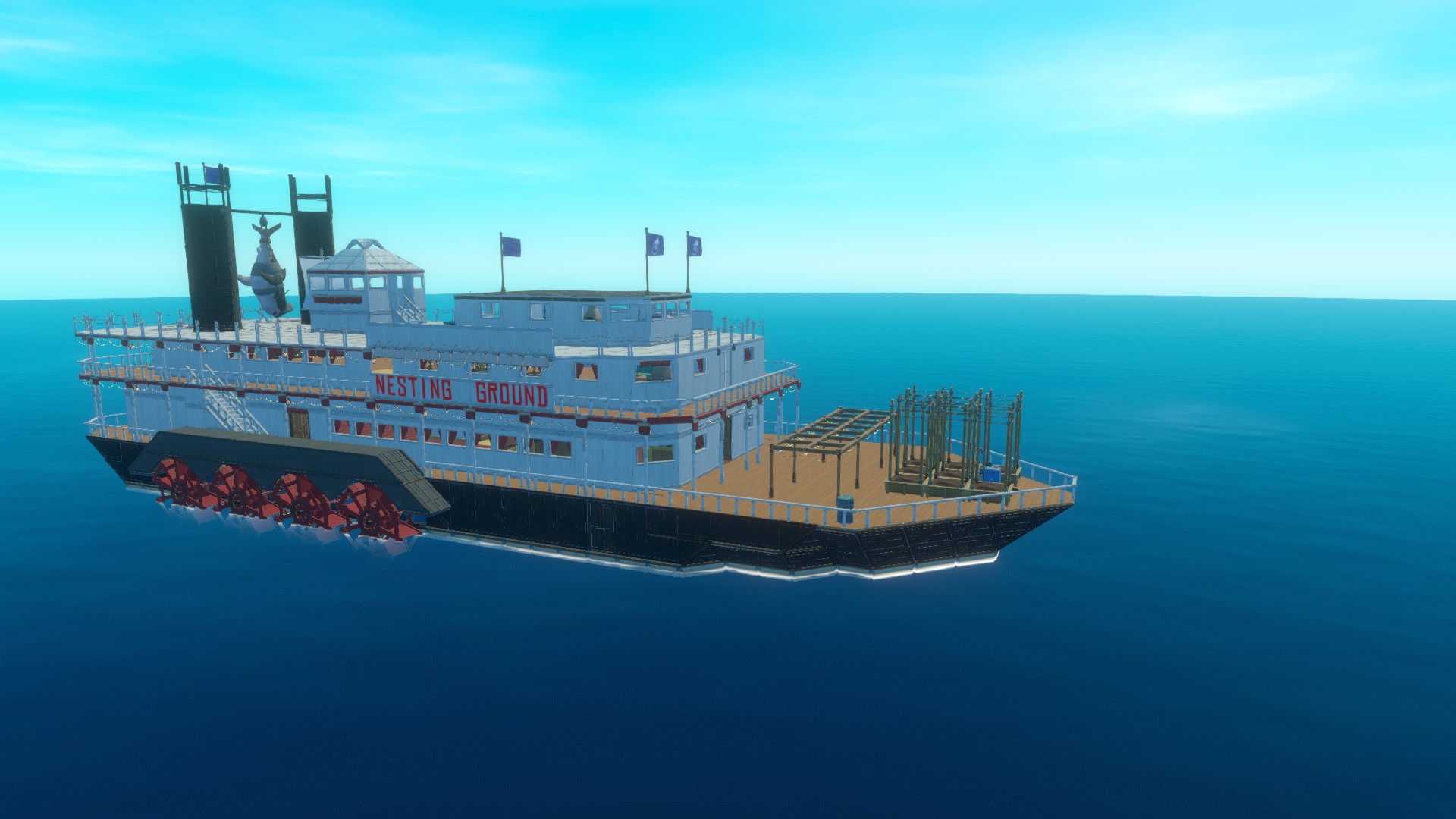I am a mariner?
At The Mariners’ Museum and Park, we believe that we are all connected by the water and by our shared maritime heritage. And through that connection, we are every one of us, mariners. That’s what we say. I’ll be honest with you, though. I didn’t really feel that.
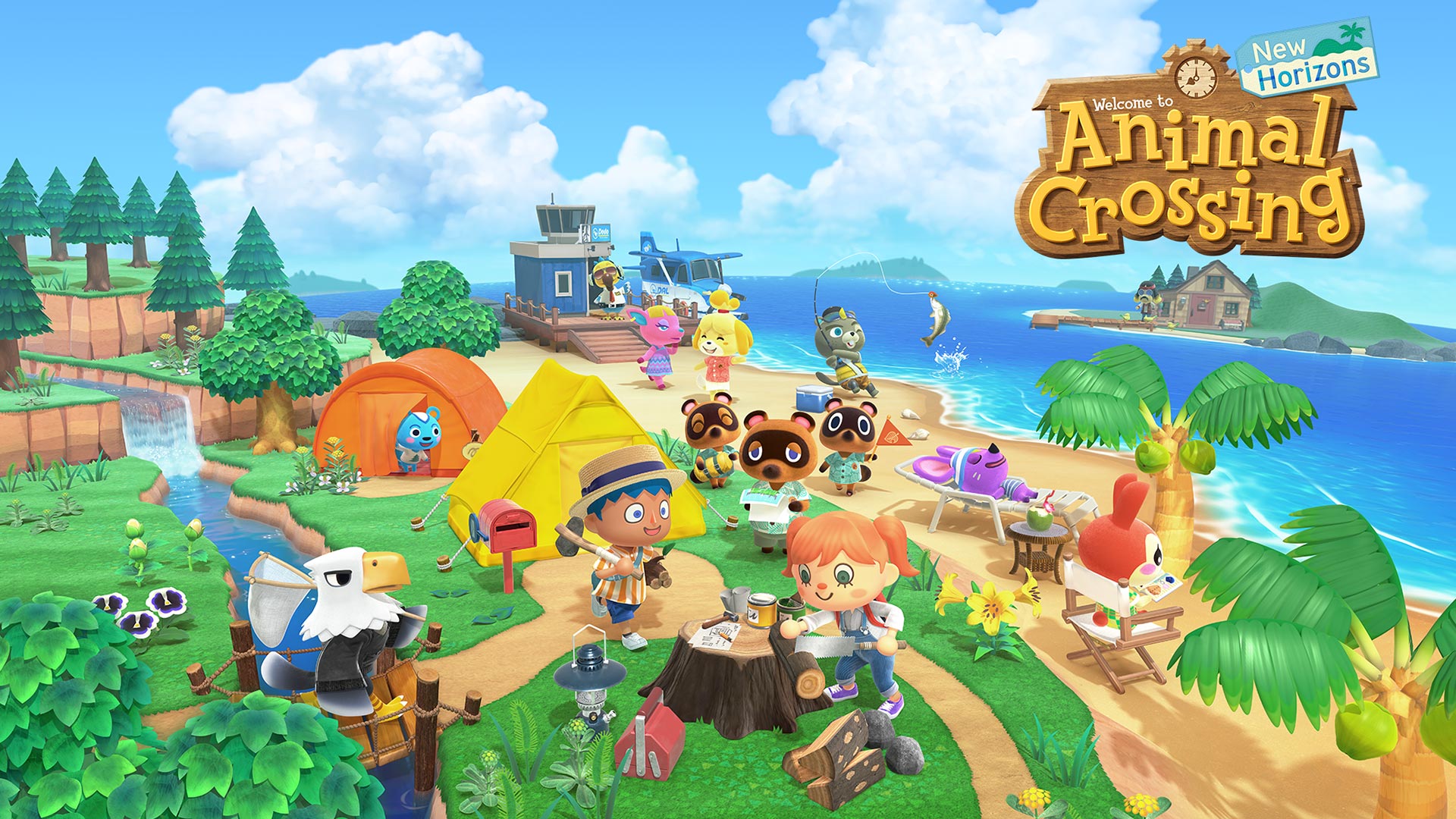
I grew up in landlocked western Pennsylvania. We weren’t beachgoers, we weren’t fishermen, and we didn’t own a boat. Sure my ancestors came to this country on a ship but does that make me a mariner?
I wondered that for a long time. Probably longer than I should admit as a team member of The Mariners’. That is until one lazy rainy Sunday morning while playing “Animal Crossing: New Horizons” on my Nintendo Switch. Yeah, you read that right.
As I watched my seaplane descend over my carefully manicured island paradise, it dawned on me how many video games have relied on maritime themes for their stories. I made a list off the top of my head, and it grew to dozens upon dozens of games.
It’s a fantasy, sure, but the modern era of video gaming makes it possible to experience that fantasy for yourself. You take the driver’s seat and chart your course. You are that mariner, and through these games and stories, you connect to the water and often to other players and fan communities.

So, welcome, to the first in a series of blogs I’ve dubbed “Simulated Seas.” We will explore some of my favorite games and some I’ve never played before and discuss their maritime ties.
Are you ready to play? Our first game is:
Simulated Seas: Raft
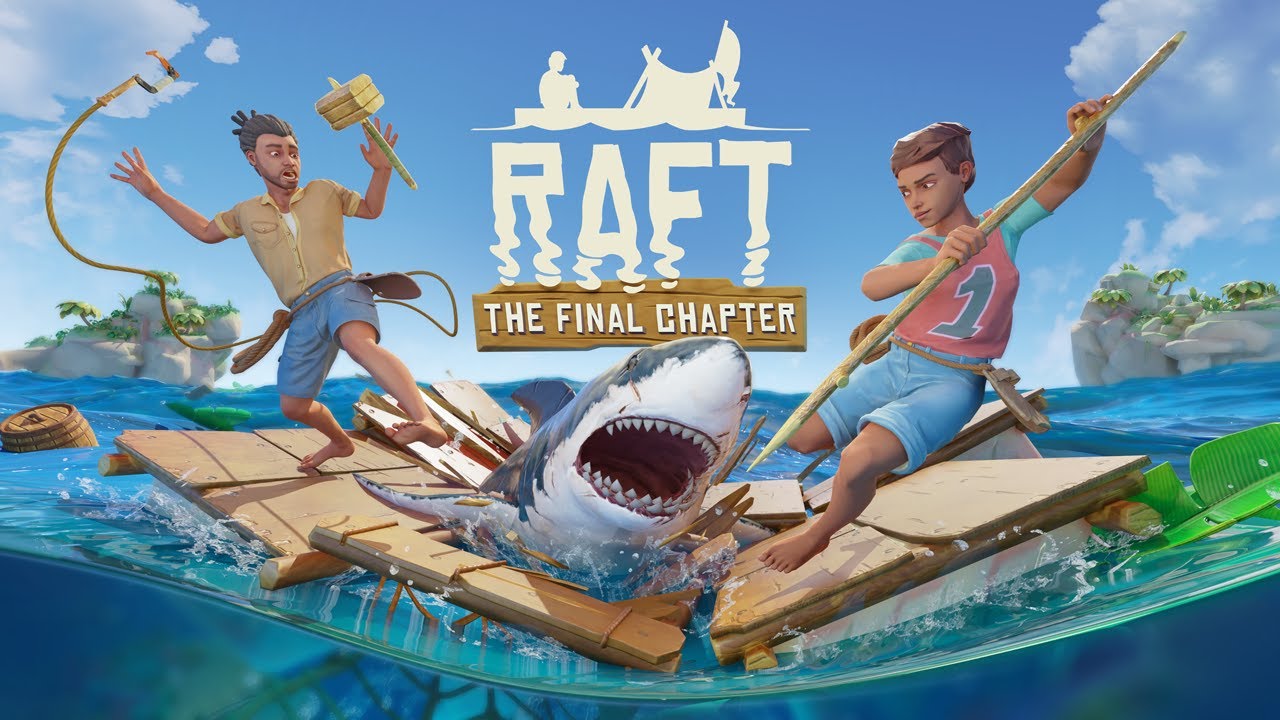
You are on a raft. That’s it. That’s how it all begins. There are no cutscenes to explain why or narration to tell you how. It all starts on a very, very small raft in the middle of the ocean. There is nothing around you but endless water. Oh, and a shark that circles your minuscule watercraft, menacingly, of course.
Then you see debris floating on the waves, the current pushing it toward you. Bits of wood, plastic, palm leaves, and barrels begin drifting past. You frantically grab what you can and work to put together what you find like a waterlogged MacGyver.
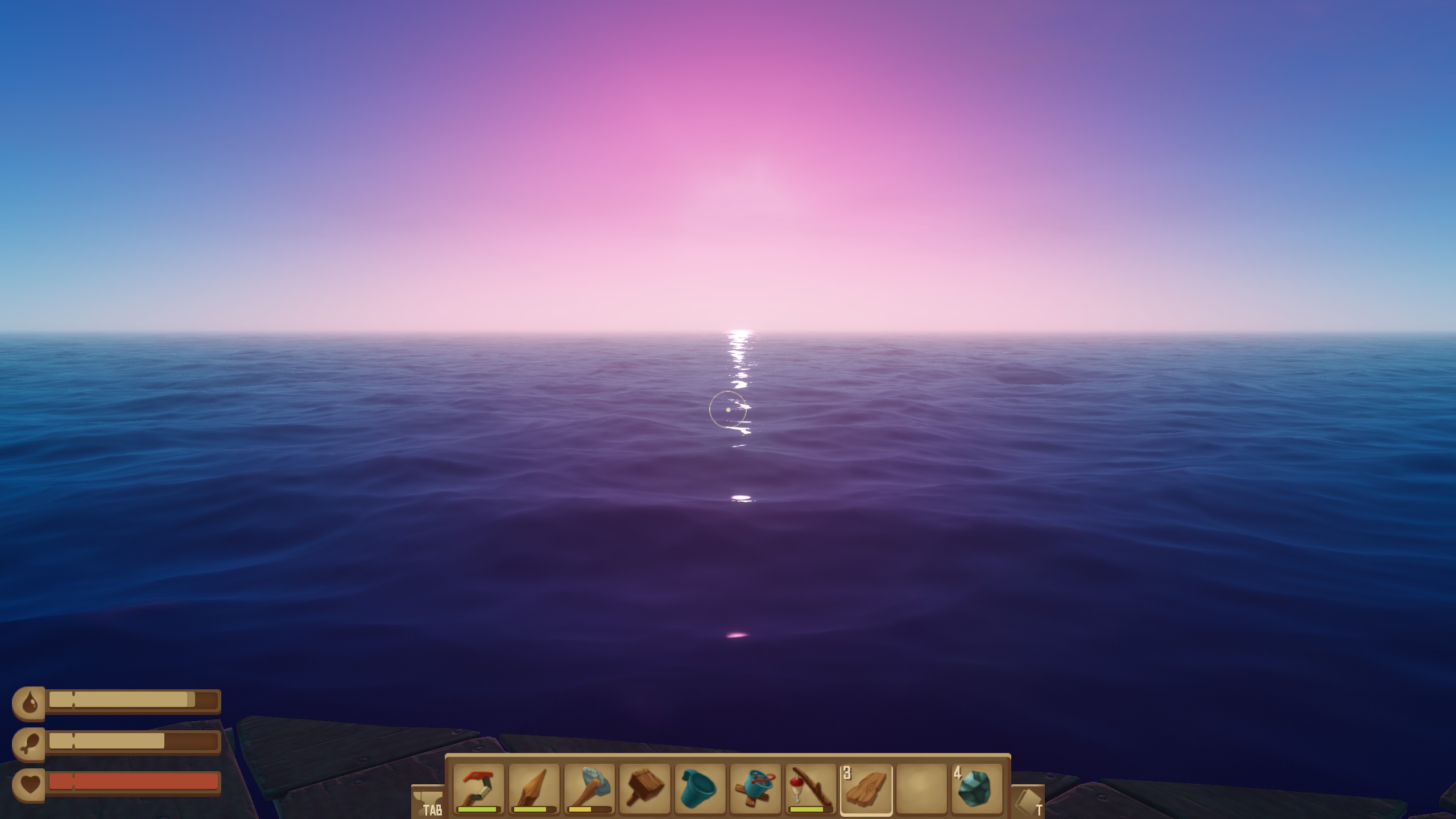
The limitless blue ocean that spreads out in front of you in the game’s opening moments calls for you to explore and see what’s out there. What happened to the world? Eventually, you find your way to various islands, gather more supplies, and learn to build more and more advanced components. The options for your raft are nearly endless to the point where many players have effectively made floating cities. But how realistic is that?
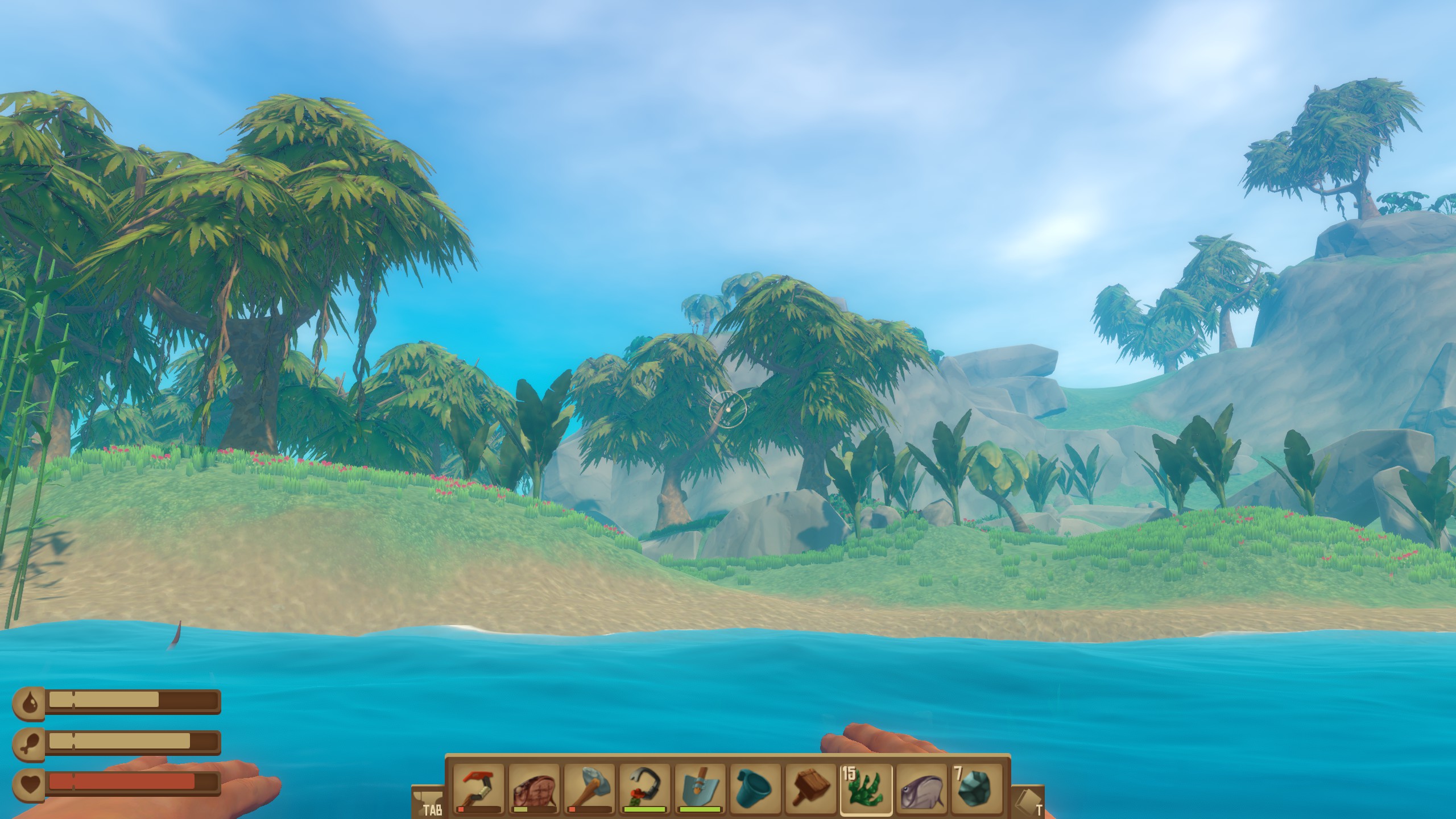
What is a Raft?
Rafts are primitive vessels characterized by a lack of hull, meaning they are flat bottomed. They stay afloat by utilizing buoyant materials such as wooden barrels, gourds, inflated bladders often made of goat or buffalo skins, etc., and are not usually propelled by engines. Rafts have been around since prehistoric times and are still in use today, although modern versions typically use pontoons, drums, or polystyrene blocks to keep afloat. Others are made of multiple layers of rubberized fabrics inflated to provide buoyancy.
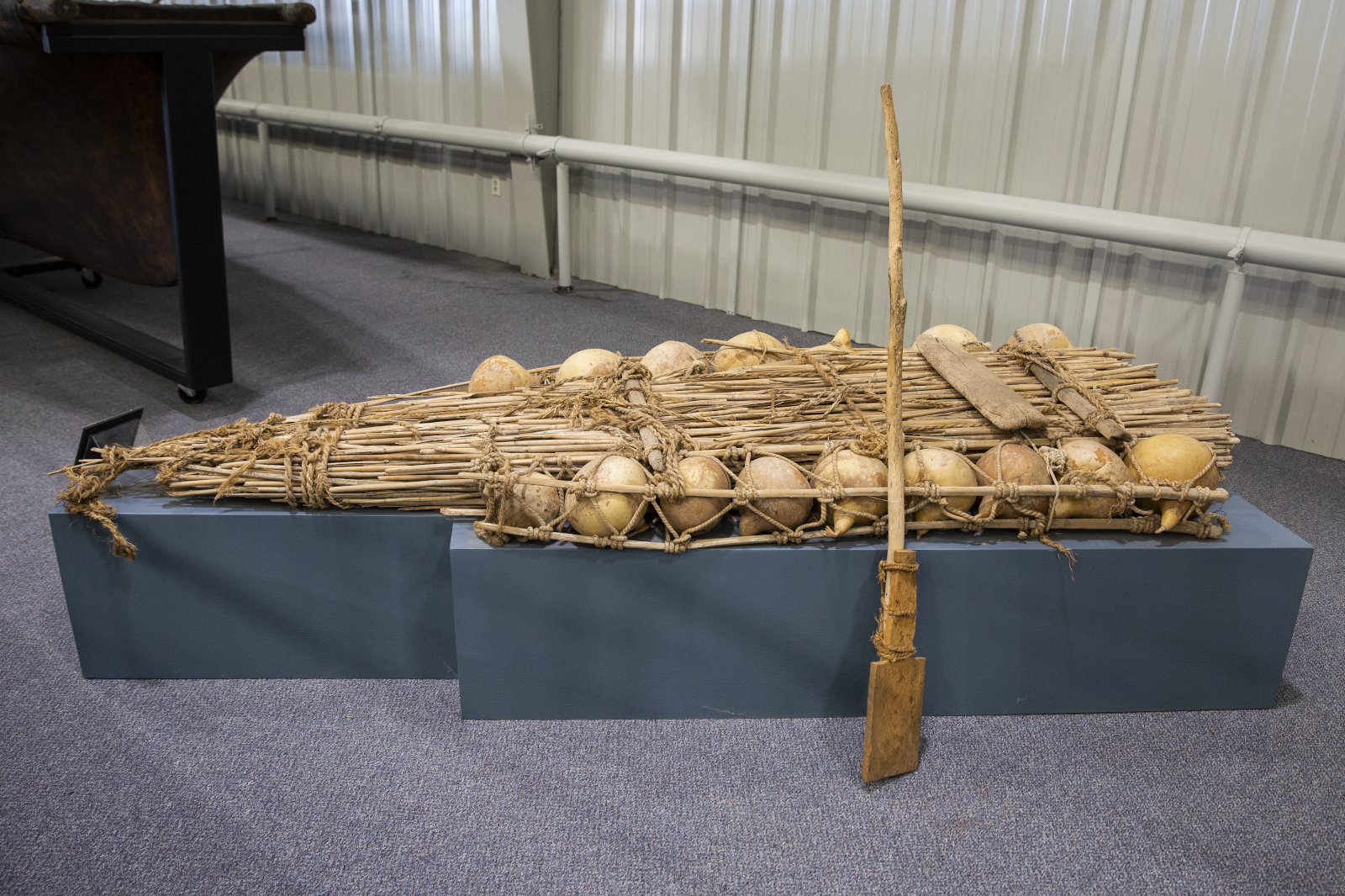
One of the most important lessons I’ve learned from working at The Mariners’ Museum is that “primitive” does not mean stupid. Rafts are a simple concept and design but elegant in that they serve a purpose and solve a problem quite easily. Ancient people needed to navigate waterways to explore and transport people, livestock, or goods and found that lashing together logs with reeds or animal hides made that possible.
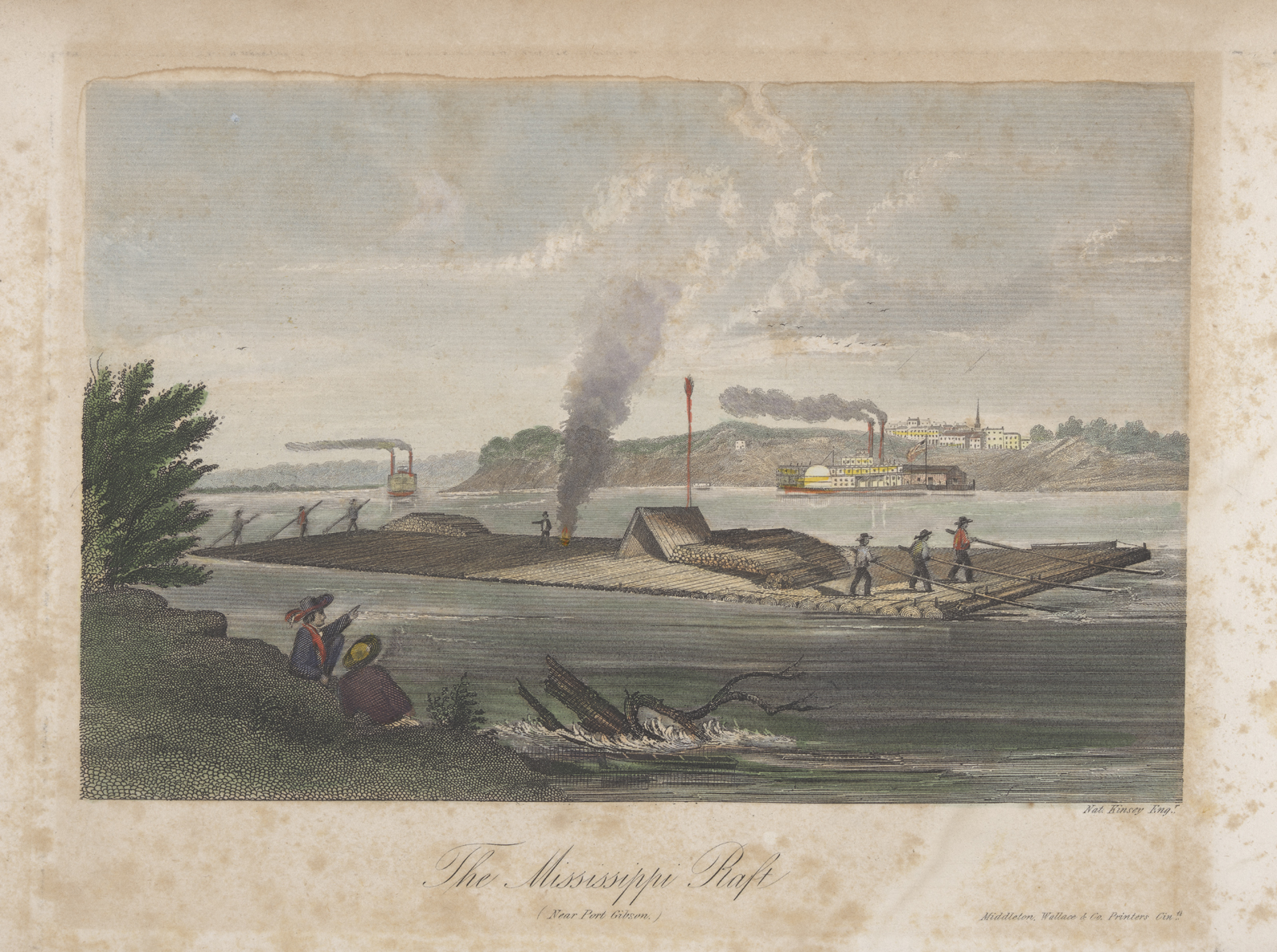
Advanced Rafts
In “Raft,” you are free to design your vessel however you want using the tools and pieces available. Players have created impressive structures, from floating cities to giant ships to castles. So how advanced did raft building get?
A couple of amazing builds by the very talented Alidove on YouTube. This is a really cute sidewheel steamboat they dubbed the “Nesting Ground,” and above is an awesome pirate ship. In “Raft,” you’re limited only by your imagination. Well, that and in-game physics, but really amazing builds are possible.
It isn’t uncommon to see rafts with structures on them, and living on boats is undoubtedly not a new idea. For example, sampan boats are typical in Southeast Asia, particularly in Malaysia, Indonesia, and Vietnam. Sampans are very shallow bottomed boats, usually including a small shelter atop that is sometimes used as a permanent home in addition to commercial uses.
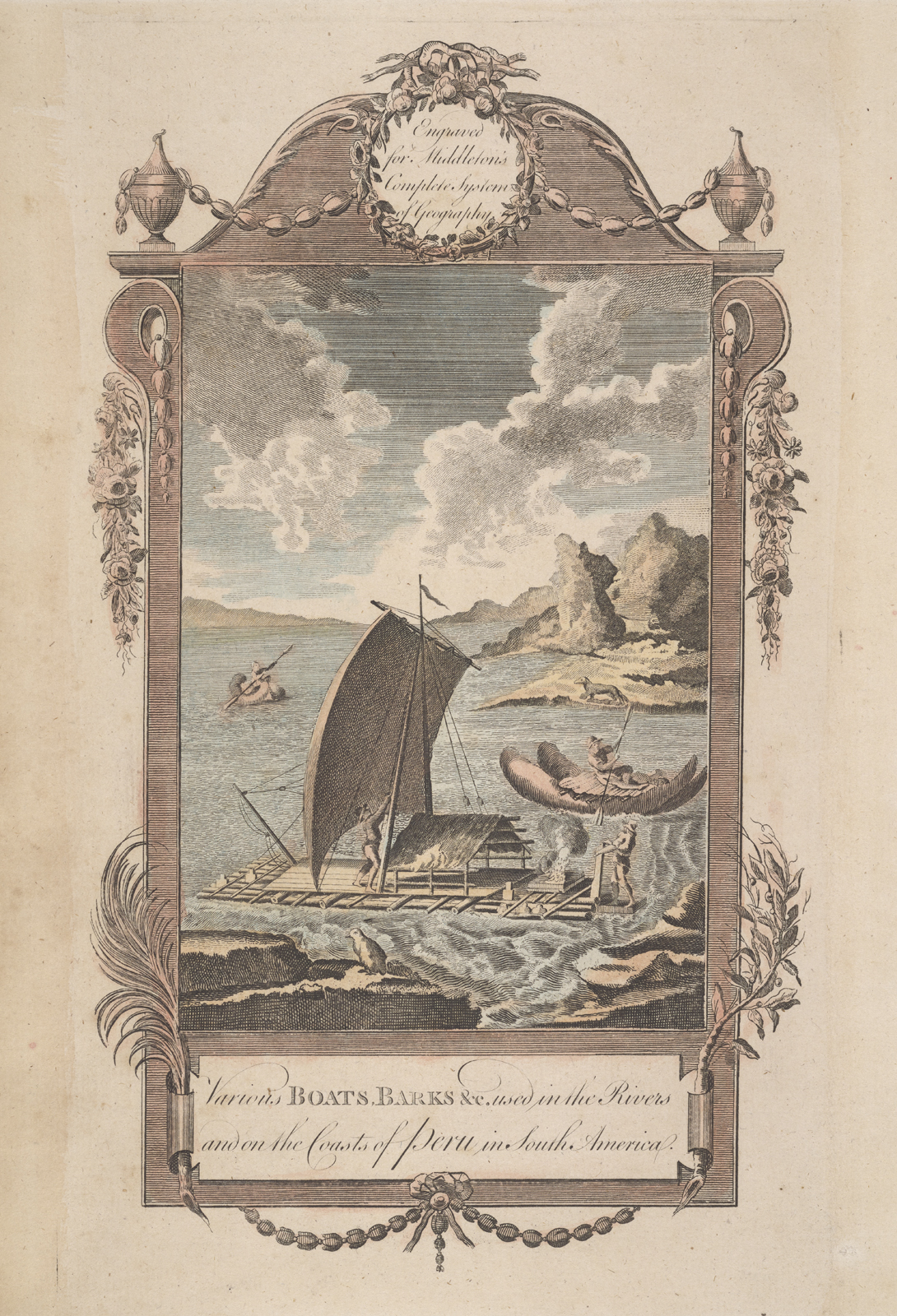
Most of the time, you will see rafts with basic structures for shade and rest. Usually, this takes the form of a basic tent or lean-to. Sails for propulsion, rudders for navigation, and small cookfires are also standard on more advanced rafts.
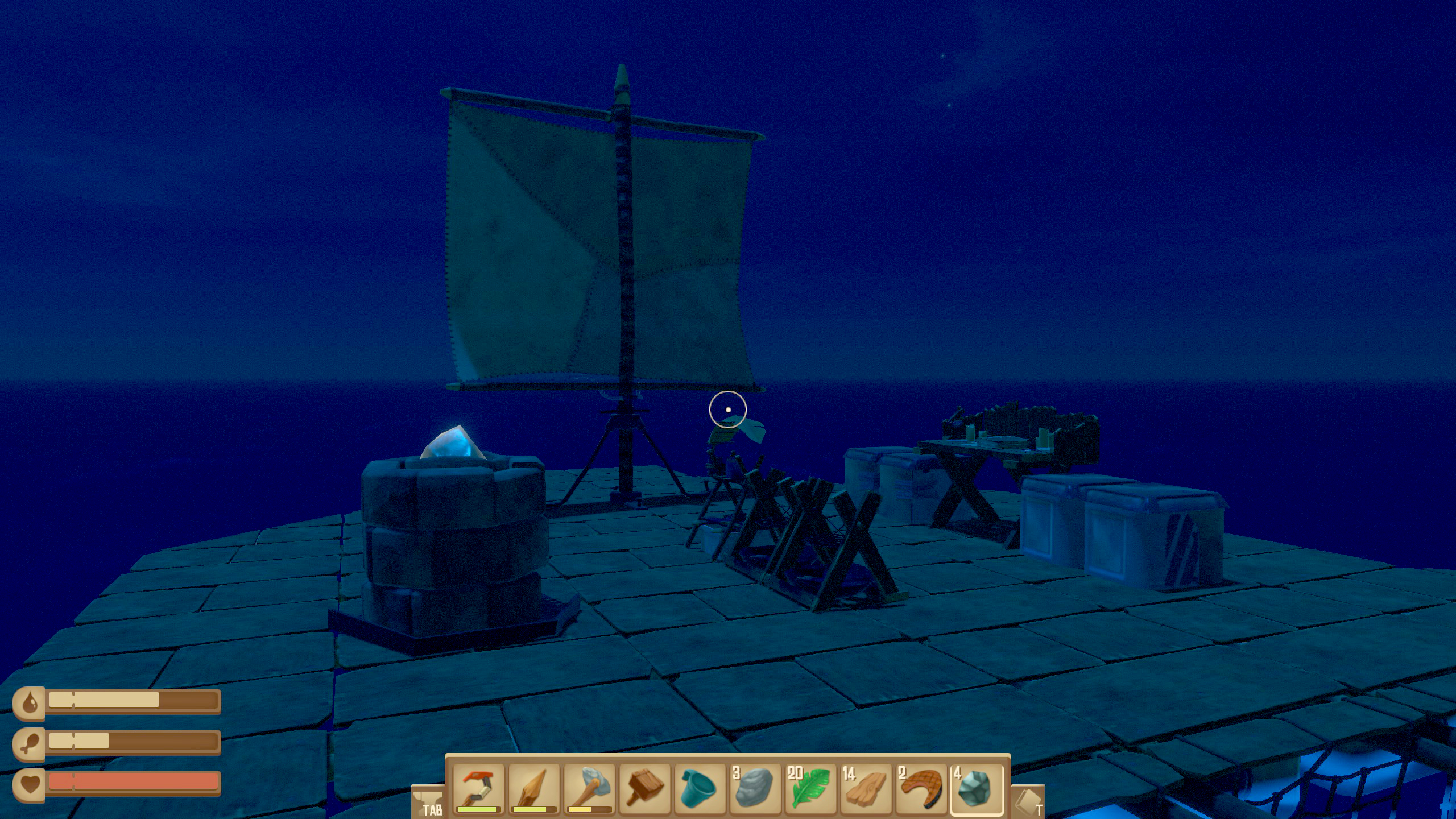
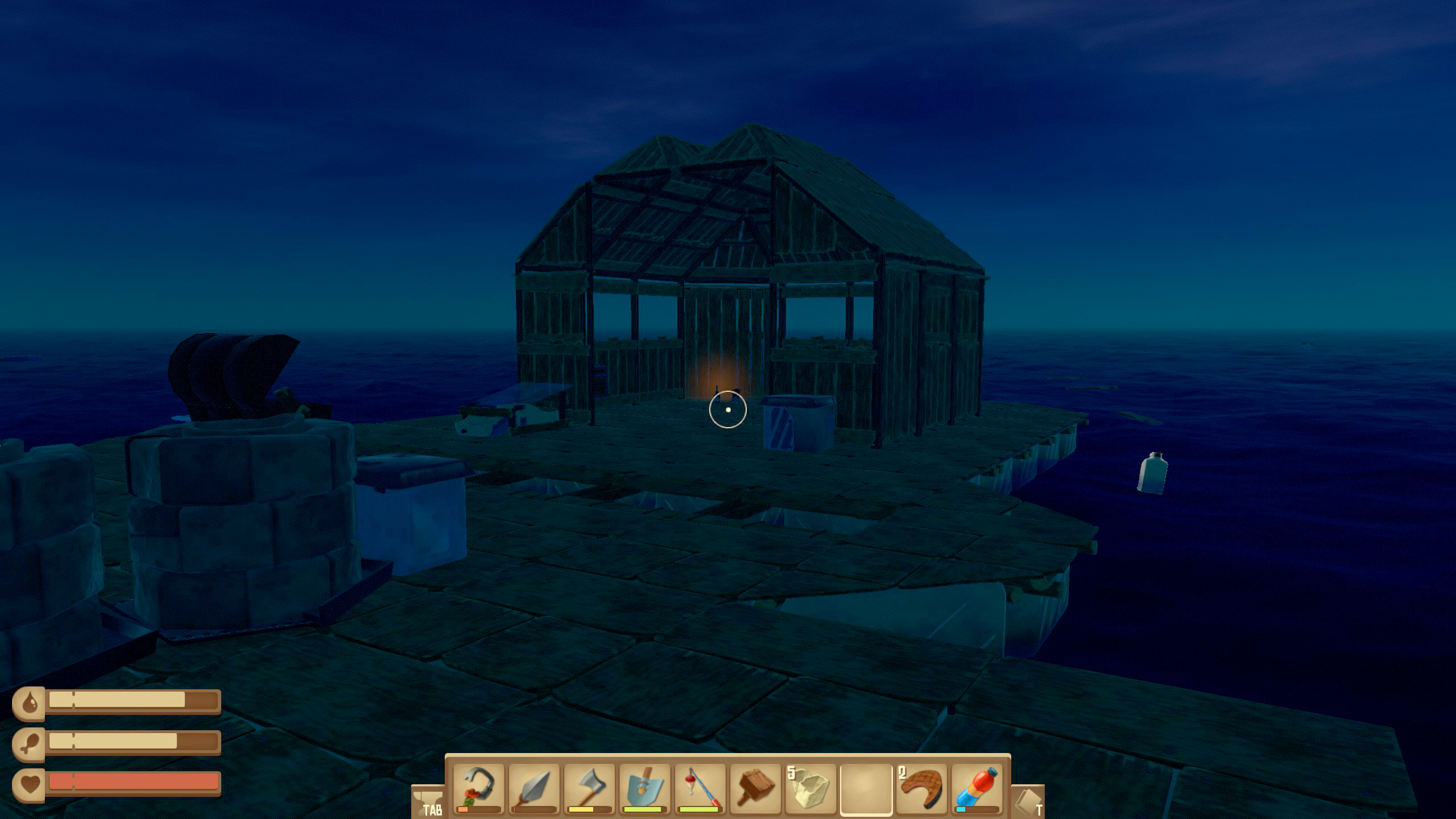
Tents, lean-tos, and sails are one thing, but what about the sort of things you can build in video game form? How likely are those? Flat-bottomed houseboats are pretty standard, but something even bigger?
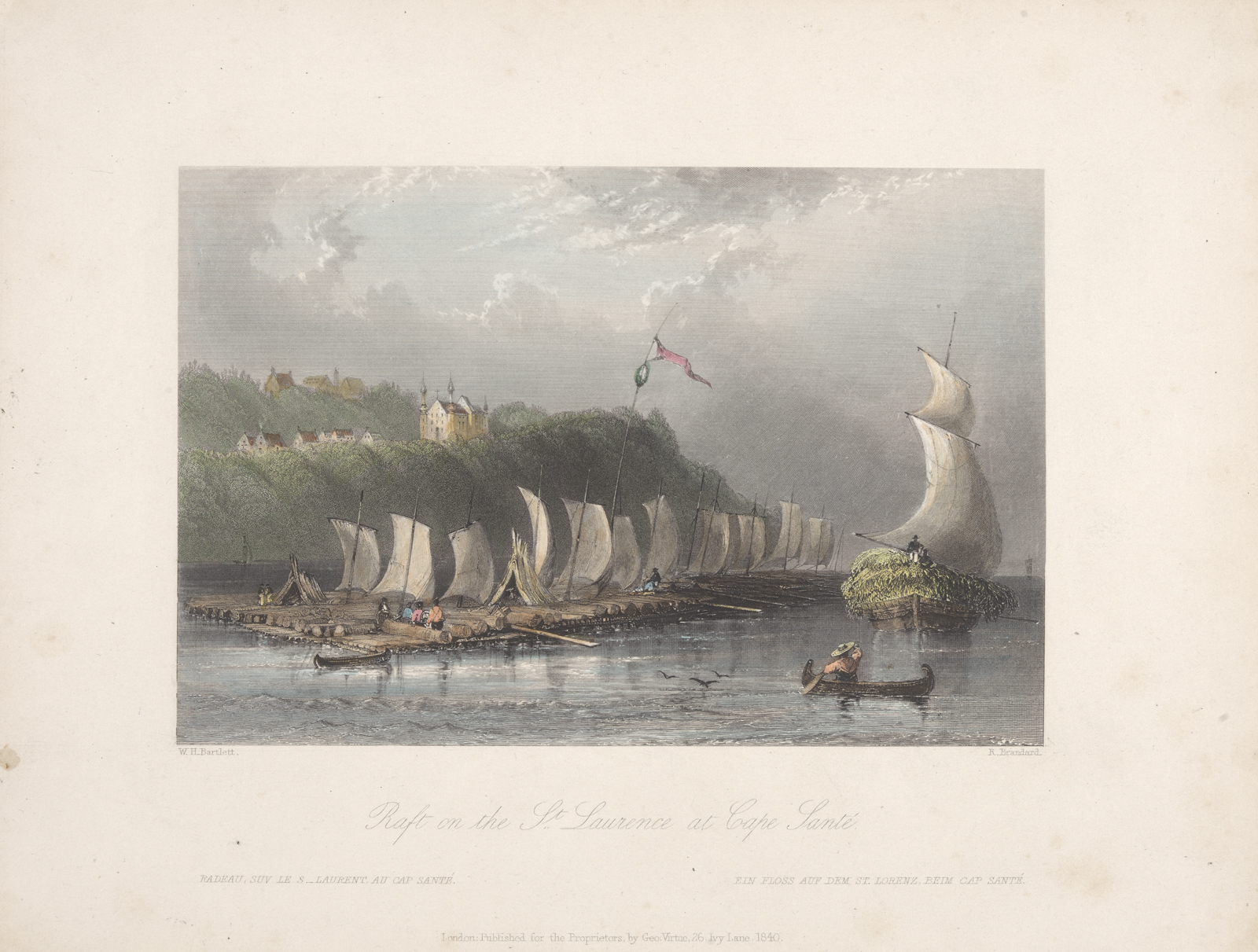
The Great French Raft
Napoleon Bonaparte, known as Napoleon I during his short but prominent reign as emperor of France, had dreams of expanding the French Empire across Europe. During the War of the Third Coalition in 1803, Napoleon started planning to invade England. The French abandoned the plans in 1805 before the Battle of Trafalgar, but the threat was real, and England had to prepare to rebuff French advances.
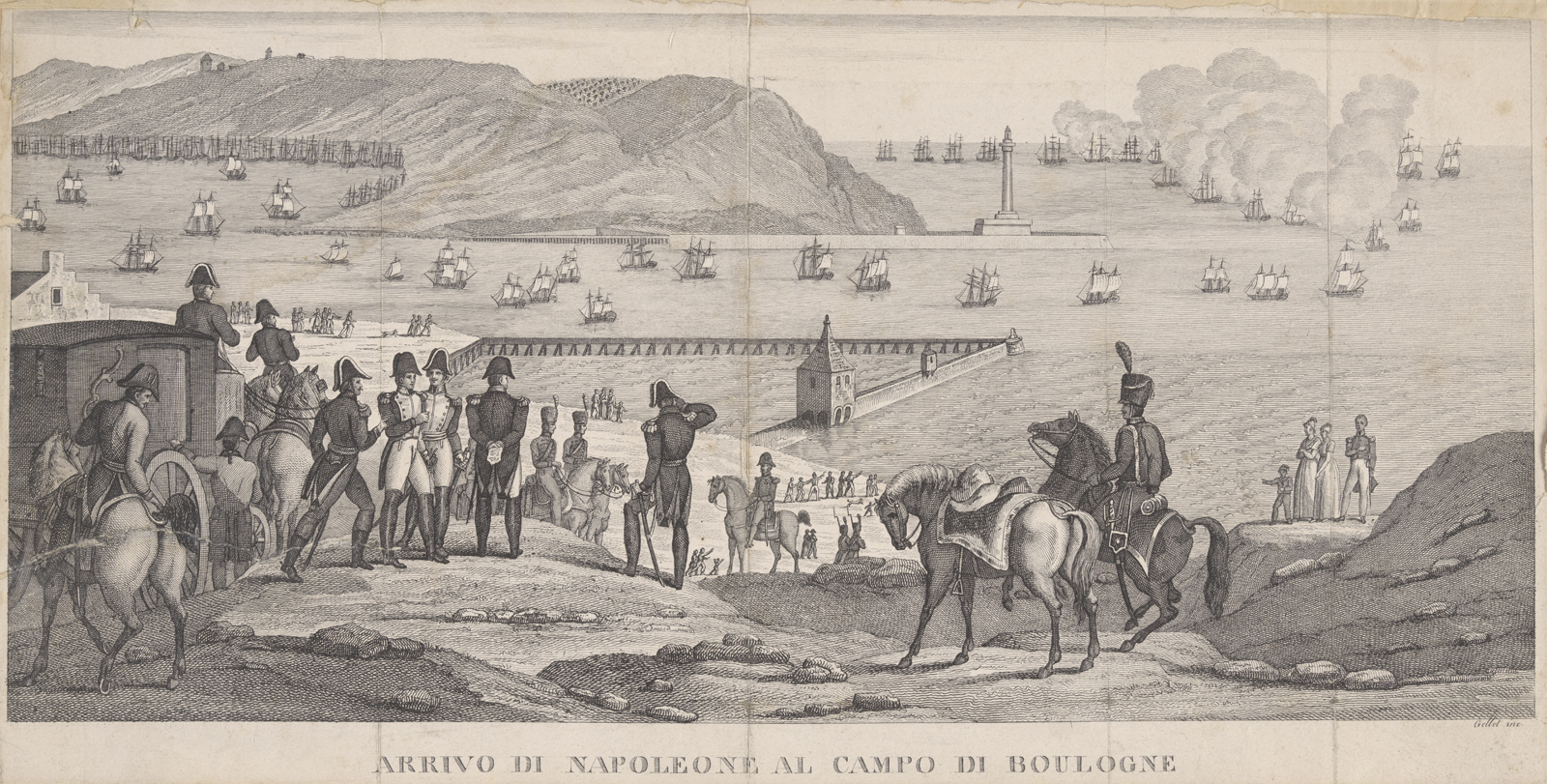
From 1803 to 1805 France formed a new army known as the Armée des côtes de l’Océan stationed at training camps in Boulogne, Bruges, and Montreuil. Napoleon saw to the construction of a large fleet of invasion barges called the National Flotilla along the coast of France and the Netherlands (known at the time as the Batavian Republic under French rule).
With Napoleon’s posturing for invasion, print media in England and Europe went wild about what the Emperor might be planning. There were entirely unfounded and sensationalized rumors of an attack by a secret tunnel under the English Channel, a balloon airship fleet, and a floating fortress on a raft.
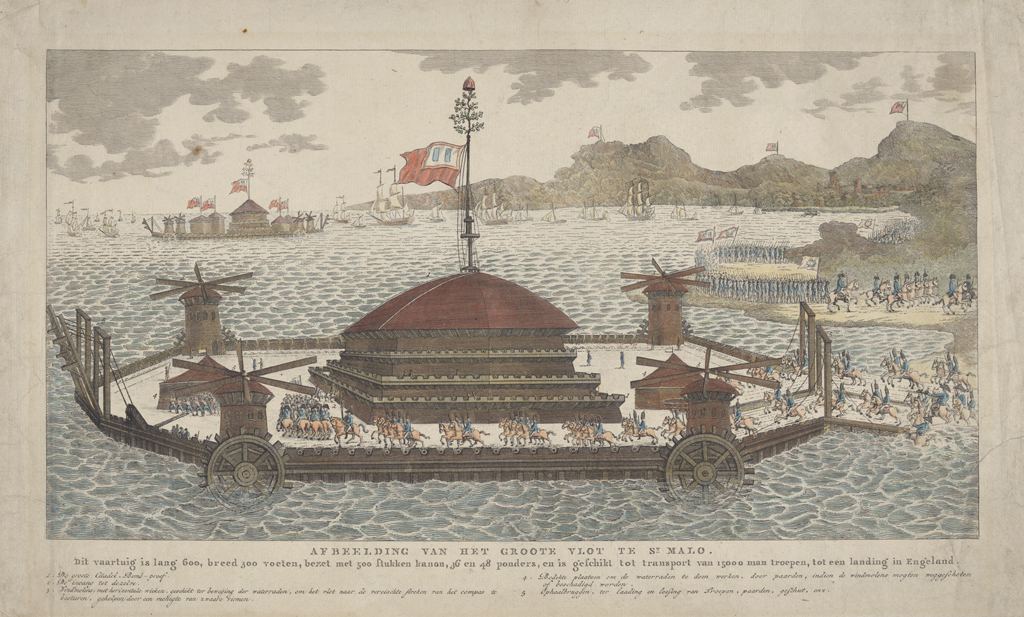
The invasion raft was rumored to be 1900-2100 feet in length(for reference, the current largest ship in service is about 1500 feet in length) and 1000-1500 in breadth, equipped with three or four paddlewheels powered by windmills, or maybe horses, multiple drawbridges for offloading, an entire fortress with 500-600 enclosed canons, and could convey 1,500-60,000 troops including cavalry, depending on what source you read.
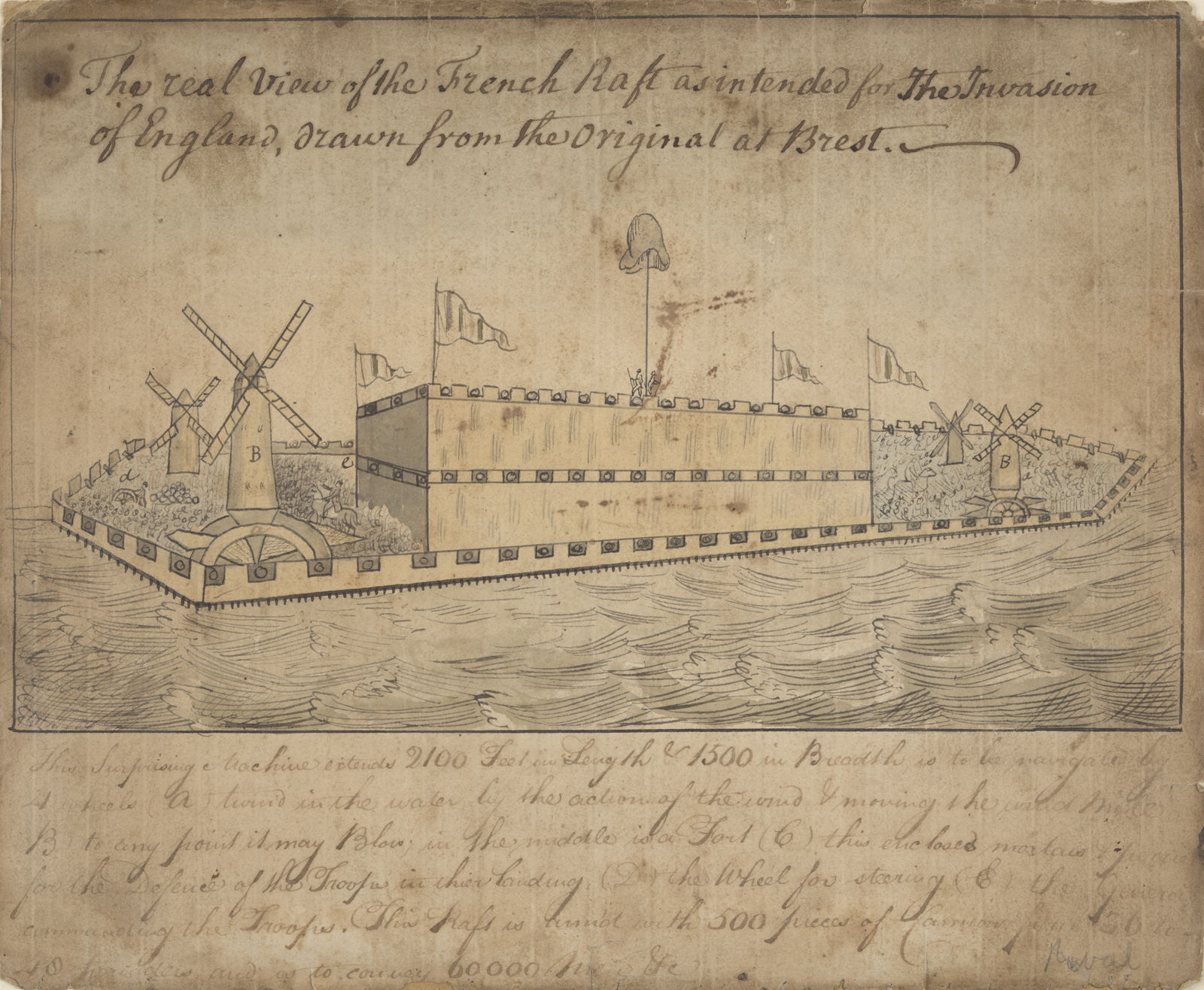
Was it real? No. But the idea existed, and it spurred the British into action to protect their shores from French forces. Can it be real? Well, thanks to my new friend Alidove on YouTube, it’s real in Raft. They did a phenomenal job recreating this strange piece of history, so be sure to go over to YouTube to like the video and subscribe for more cool content!
Diving for Resources
One other crucial aspect of Raft is collecting resources. You need materials to expand your raft and progress the story. A lot of what you need you can find floating along the ocean’s surface or on the islands you discover, but the rest lies beneath the waves. With hook in hand, you leap into the water and dive to the riches below.
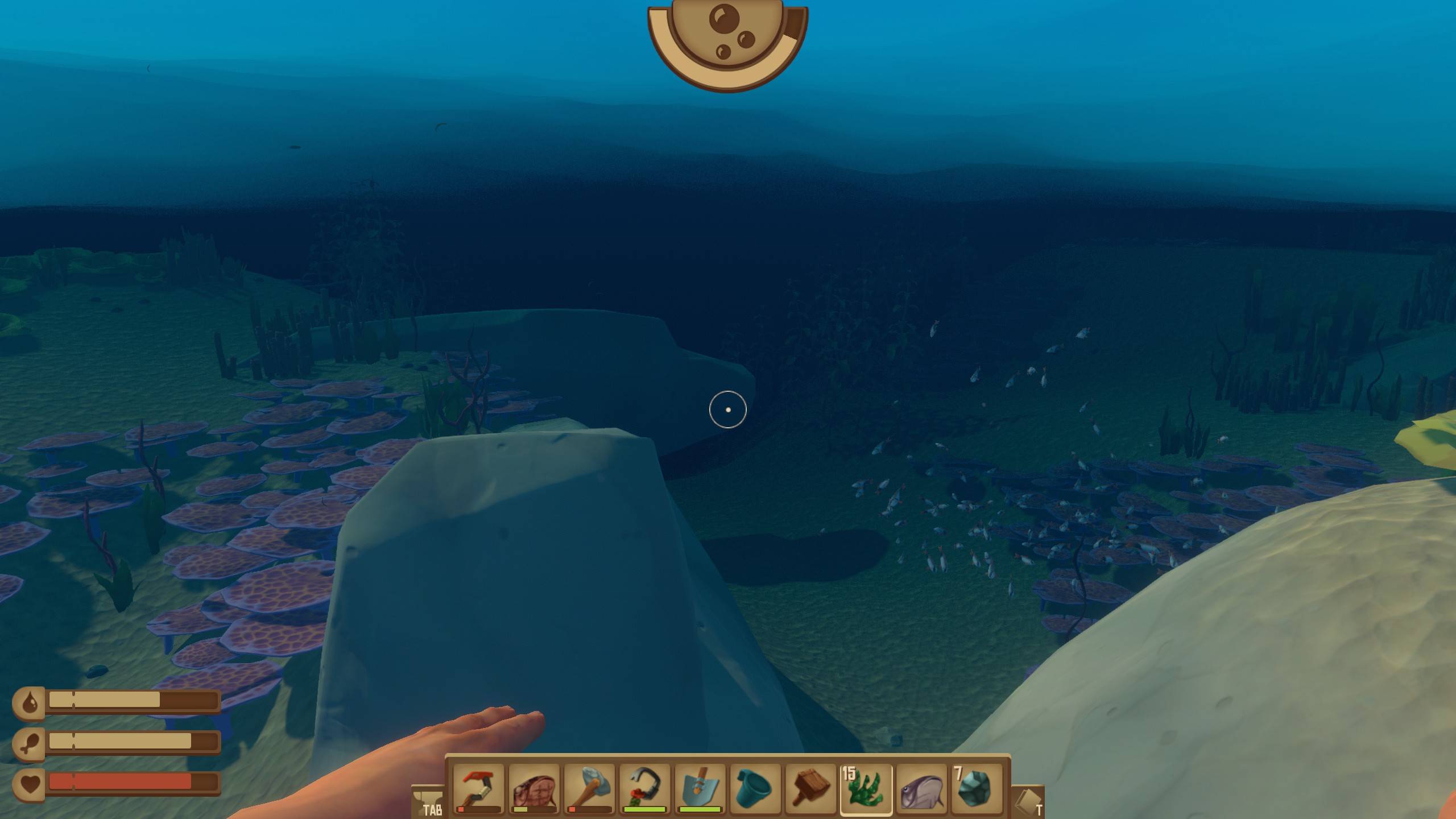
Freediving is a form of underwater diving that relies solely on holding your breath until you resurface rather than using something like scuba gear. Crafting an oxygen bottle, a makeshift breathing apparatus is possible in Raft, but most of your time is spent freediving. As you remain underwater searching for materials, your oxygen gauge will slowly deplete. If it reaches 0 before you resurface, your health bar will then start to deplete.
How feasible is it to search the ocean floor for materials while freediving? Actually, very possible. In fact, freediving has been around for, well, basically always. In ancient times it was the only option, after all, with the exception of the occasional use of reeds and leather breathing bladders.
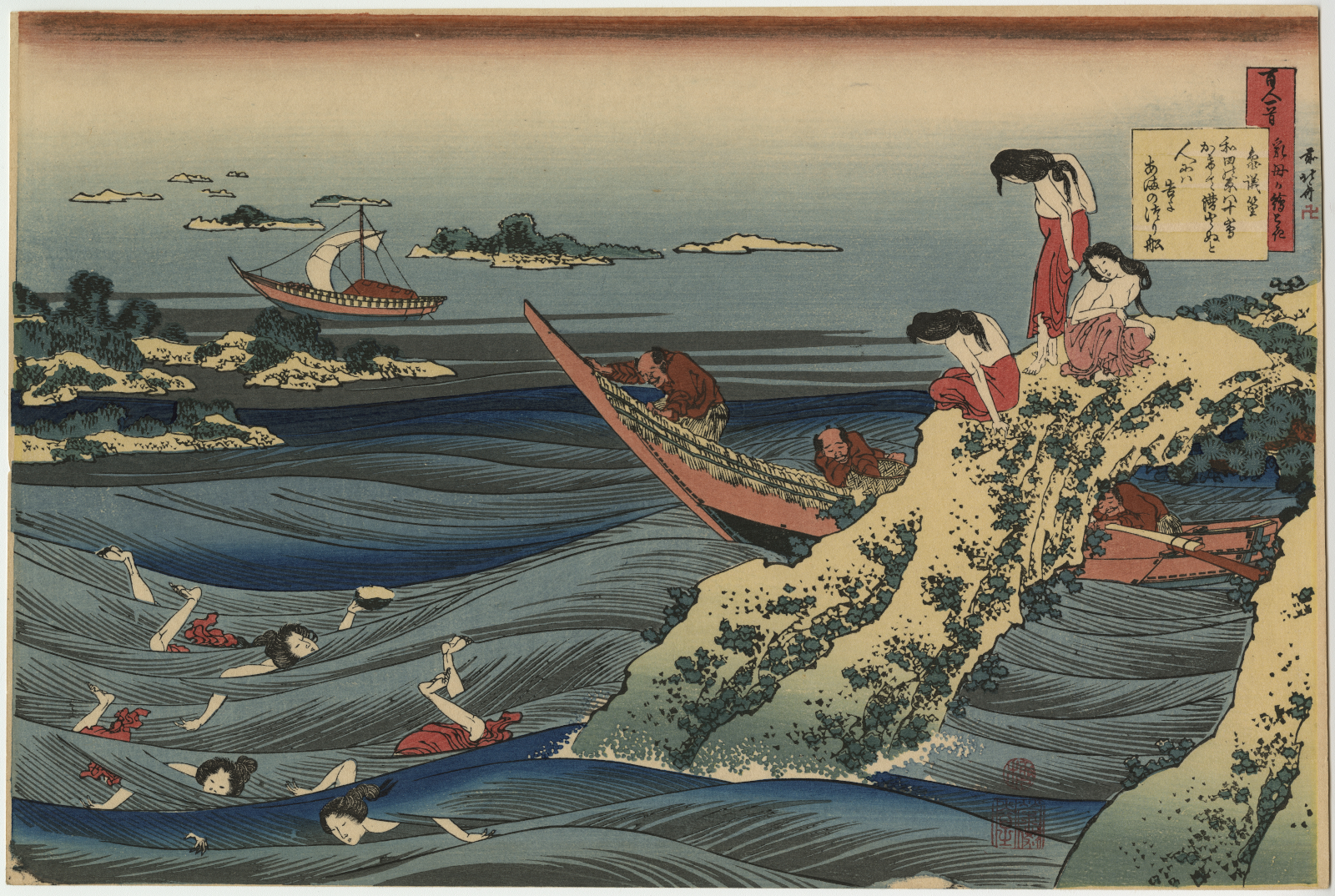
In ancient cultures, freedivers plumbed the depths to gather food or harvest materials like sponges, red coral, and pearls or reclaim sunken goods from shipwrecks. Records of Japanese Ama divers exist as far back as 2,000 years ago, diving for pearls, seaweed, and shellfish, especially abalone. Ama divers still operate today without the assistance of scuba gear, and the vast majority of ama have always been women.
Connecting the Pieces
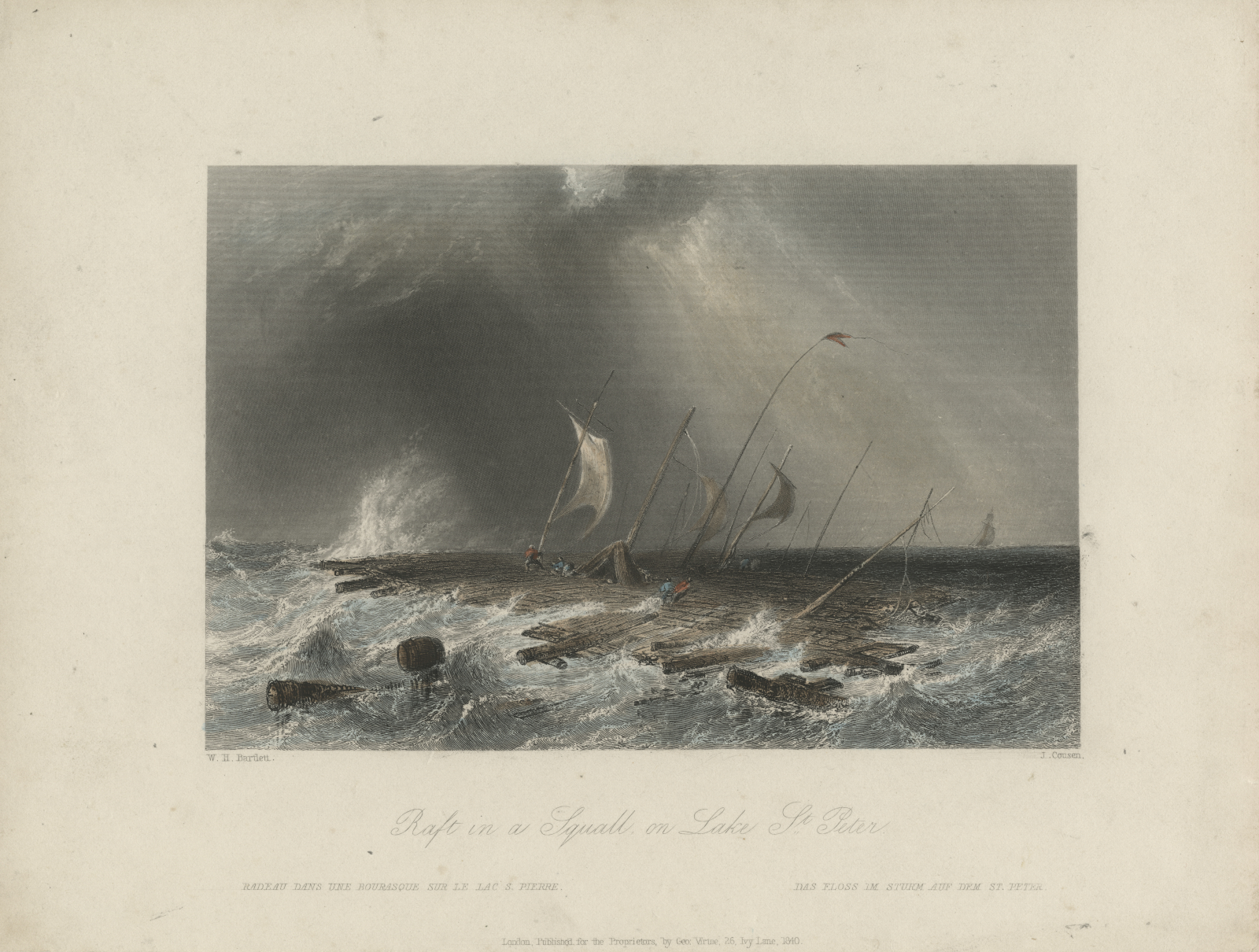
At The Mariners’ Museum and Park, we connect people to the world’s waters because through the water, we are connected to one another. You’ve probably heard us say it before, and you’ll definitely hear us say it again. Writing these blogs reminds me of just how real that mission is.
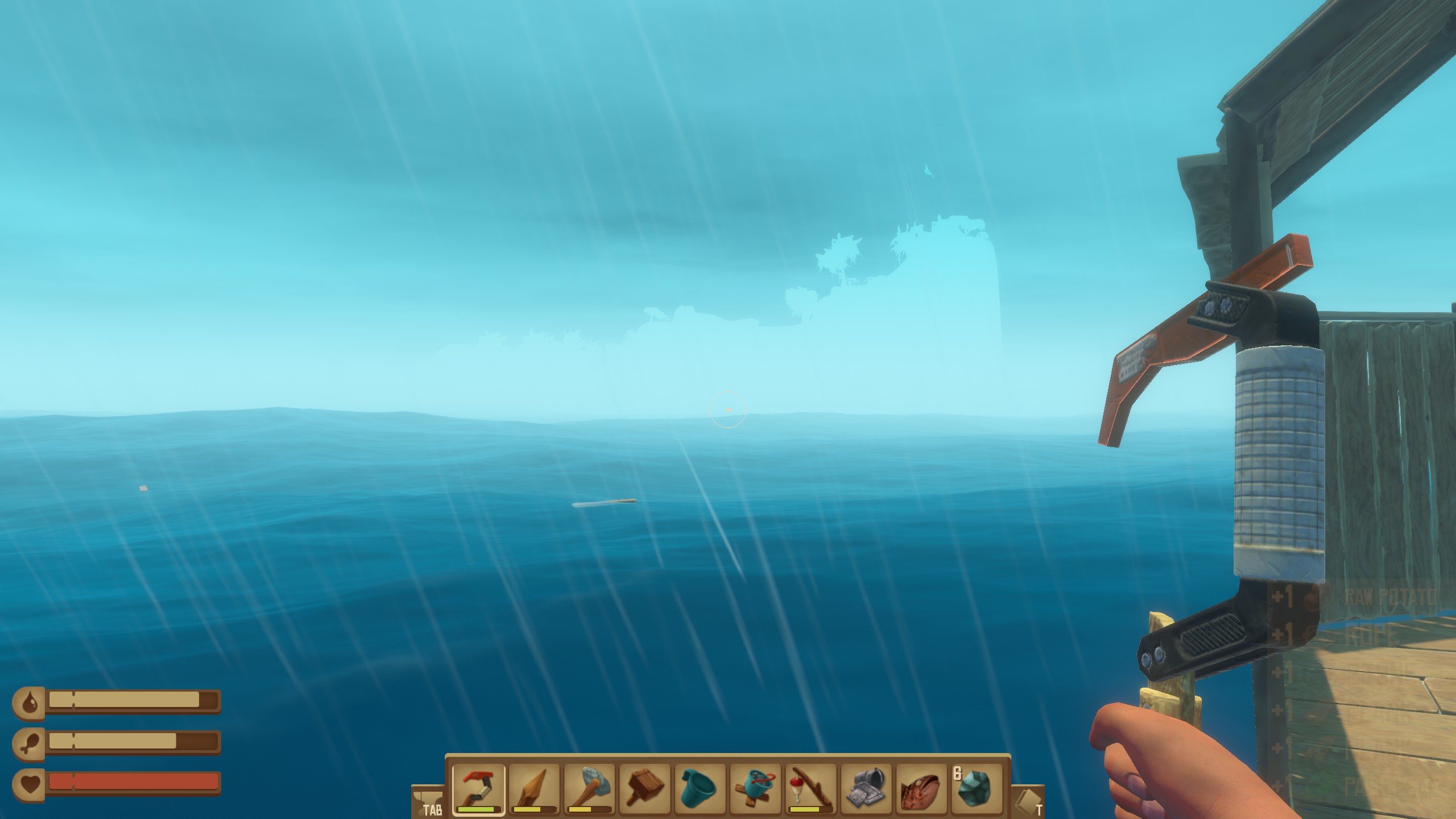
Through this blog, and through Raft, I was able to learn pieces of our shared maritime history that I never knew, and with the help of new friends that I’ve connected with, we were able to bring them to life. Each time I explore the rich world of maritime history, I find new threads that bind me to the world at large, meet new people, and experience new things. That’s the power that both our shared maritime culture and our digital world can have.
You may feel like I once did like you aren’t really a mariner. If you take the time to look around, however, you may find you have more connections than you realized and in unexpected places. Who would have thought that this ocean-based survival simulation would be able to open that door for me? All I had to do was walk through.
